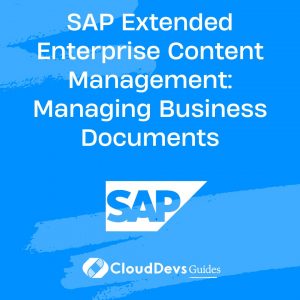SAP Real Estate Management: Streamlining Property Operations
In the realm of property management, efficiency is the name of the game. Whether you’re overseeing a portfolio of residential complexes or commercial spaces, the ability to streamline operations is paramount to success. Enter SAP Real Estate Management (SAP REM), a powerful solution designed to revolutionize the way properties are managed and maintained. Let’s delve into how SAP REM is transforming the landscape of property operations, one keystroke at a time.
1. Understanding SAP Real Estate Management
SAP Real Estate Management is an integrated software solution that empowers property managers with the tools they need to optimize every aspect of their operations. From lease administration and space management to financial accounting and reporting, SAP REM offers a comprehensive suite of features tailored to the unique needs of the real estate industry.
2. Key Features and Benefits
2.1. Lease Administration
With SAP REM, lease administration becomes a breeze. The platform allows users to centralize lease data, track key dates and milestones, and generate comprehensive lease abstracts with ease. This level of automation not only saves time but also minimizes the risk of errors, ensuring that lease agreements are managed efficiently and accurately.
2.2. Space Management
Efficient space utilization is crucial for maximizing the value of real estate assets. SAP REM provides robust tools for visualizing and optimizing space usage, allowing property managers to identify opportunities for consolidation, expansion, or reconfiguration. By gaining insights into space utilization patterns, organizations can make informed decisions that drive efficiency and reduce costs.
2.3. Financial Accounting and Reporting
Managing finances is an integral part of property management, and SAP REM simplifies the process with its robust financial accounting capabilities. From tracking rental income and expenses to generating detailed financial reports, the platform provides a comprehensive view of financial performance across the entire property portfolio. With real-time visibility into financial metrics, organizations can make data-driven decisions that optimize profitability and drive growth.
3. Real-World Examples
Example 1: Jones Lang LaSalle (JLL)
As one of the world’s leading real estate services firms, JLL leverages SAP REM to streamline its property management operations on a global scale. By centralizing lease data and automating critical processes, JLL has been able to improve efficiency, enhance accuracy, and deliver superior service to its clients.
Read more about JLL’s success with SAP REM – https://www.sap.com/documents/2016/06/3e90b1d2-757c-0010-82c7-eda71af511fa.html
Example 2: Prologis
Prologis, a global leader in logistics real estate, relies on SAP REM to manage its extensive portfolio of industrial properties. By leveraging SAP REM’s advanced analytics and reporting capabilities, Prologis has been able to optimize space utilization, reduce operating costs, and drive portfolio performance.
Discover how Prologis maximizes value with SAP REM – https://www.sap.com/documents/2017/05/65735d1f-bd7c-0010-82c7-eda71af511fa.html
Example 3: Boston Properties
Boston Properties, a prominent real estate investment trust (REIT), trusts SAP REM to streamline its lease administration and financial accounting processes. By consolidating lease data and automating routine tasks, Boston Properties has been able to improve accuracy, reduce risk, and enhance overall operational efficiency.
Explore Boston Properties’ journey with SAP REM – https://www.sap.com/documents/2015/07/73d92df9-5b7c-0010-82c7-eda71af511fa.html
Conclusion
In an industry as dynamic and competitive as real estate, efficiency is non-negotiable. SAP Real Estate Management empowers property managers with the tools they need to streamline operations, optimize resources, and drive success. By leveraging SAP REM’s powerful features and capabilities, organizations can stay ahead of the curve and unlock new opportunities for growth and innovation.
Table of Contents









